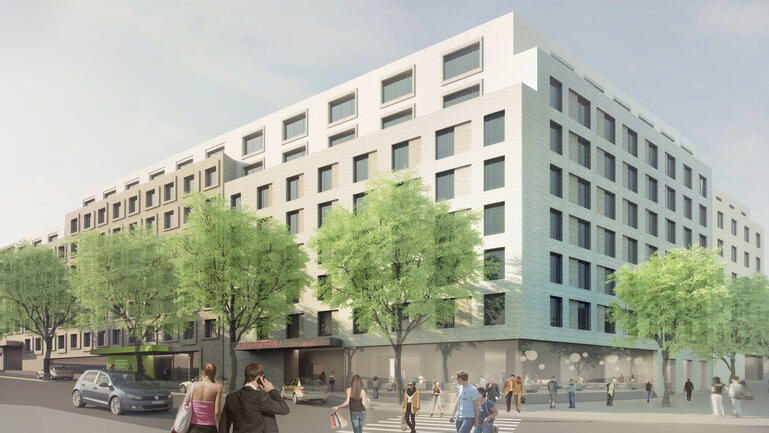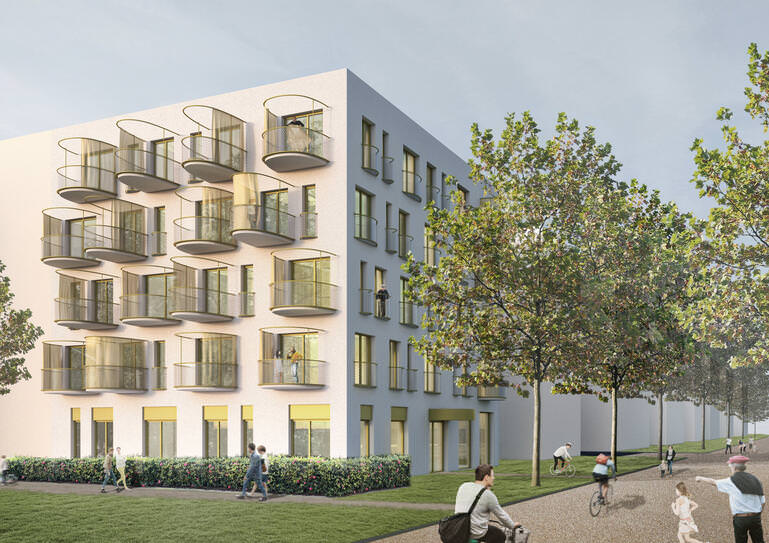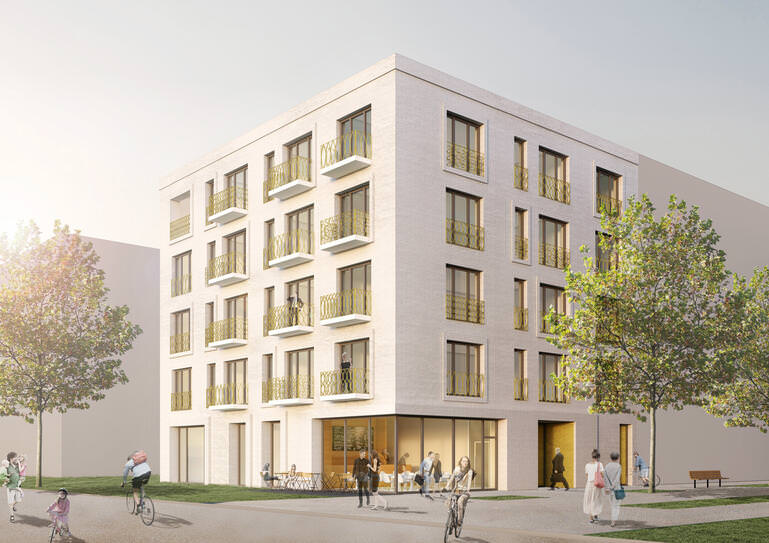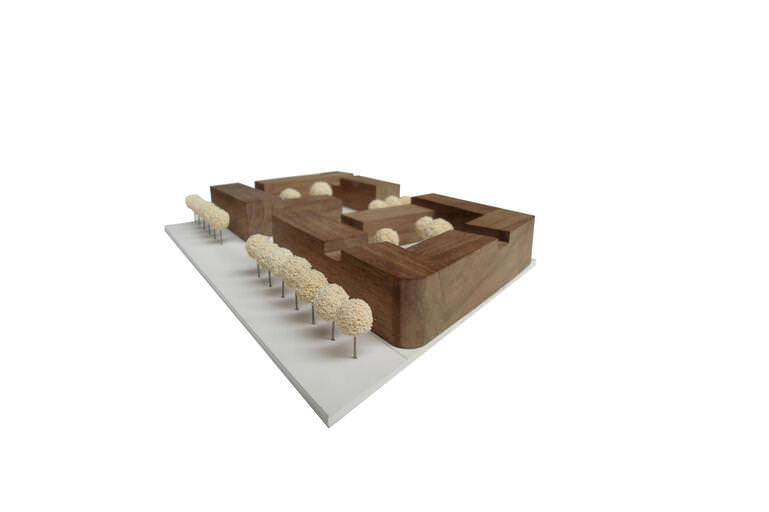In the block
Wohnhaus Braystaße, Munich
Competition contribution to the residential development of an inner-city block in Munich - 74 residential units occupy the interior of a partially listed open building block behind the St. Gabriel church on the Prinzregentenstraße. The sensitive incorporation with extensive preservation of the historic tree population ensures adequate re-compaction and at the same time preserves the living quality of the existing buildings as well as the character of the district.
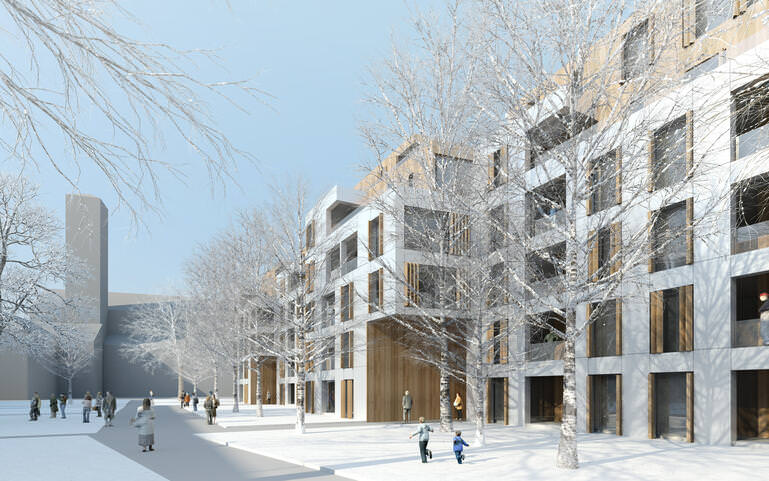
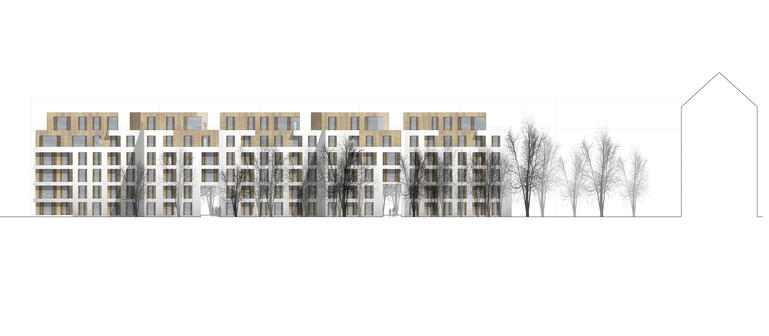
Precision and blurring - strategy of space
The rapid perception of public space is the strategy of the design decision to counteract the high-traffic area of the Einsteinstraße and Prinzregentenstraße with its precise urban planning. Along these lines, there is a precisely defined spatial edge with a closed building mass formation, which is partially listed. The quiet, intimate courtyard marks the beginning of a building-day agglomeration that consciously decreases in terms of spatial significance. The generally oriented houses represent individuals here, with rather diffused spatial boundaries
Orientation - order and chaos
Building masses with high symbolism - the existing block edge - are opposed by a significantly contrary typology. The high order of an open block edge follows the irregular arrangement of a band-shaped oscillating and sculpturally graduated building in the block interior. Both, order and chaos, lead in a balanced way to the unmistakability and orientation ability of a place (mind mapping). The close communication with the existing vegetation elements and the deliberate contrast in the color design of the buildings (red - green) leads to the enhancement of an unmistakable quarter character.
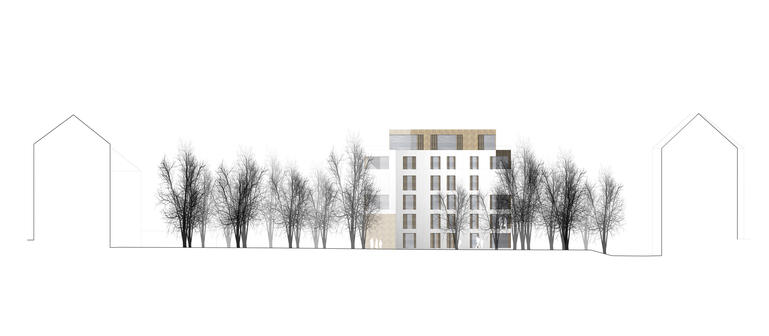
Building masses with high symbolism - the existing block edge - are opposed by a significantly contrary typology.
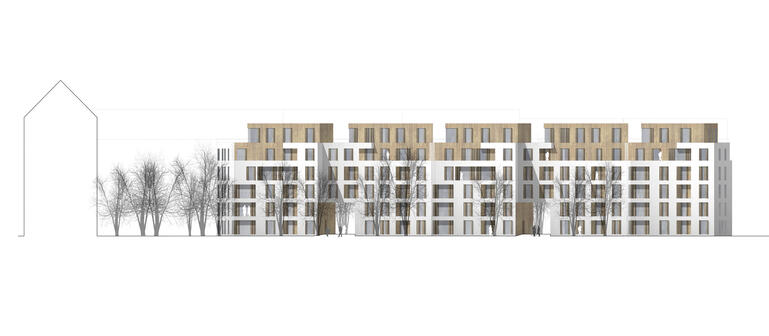
Residential value - private and communal
Conflicts in the social sphere are avoided by a sharp demarcation of private and public spaces. The compacted, up to six-storey buildings provide sufficiently large public and shared spaces as open spaces. To secure private interests serve sufficiently large building distances. Forms of individual living and community encounter can be realized.
Economy - permanent and flexible
To ensure economic conditions (creation and maintenance), all buildings are designed with a very good volume / envelope ratio and an economic envelope geometry. Sustainable construction means flexible construction in order to meet future requirements (demographic change, changes in lifestyles) on a sustainable basis. Central access areas (stairwell), which are already laid out in the urban planning basic structure, offer maximum functional and spatial flexibility. The parking (cars, bicycles) is offered in the TG two separate, comfortable usable levels. For optimum living conditions and an optimal energy balance, the building masses orientate themselves on the result of the best possible shadow-free energy simulation.
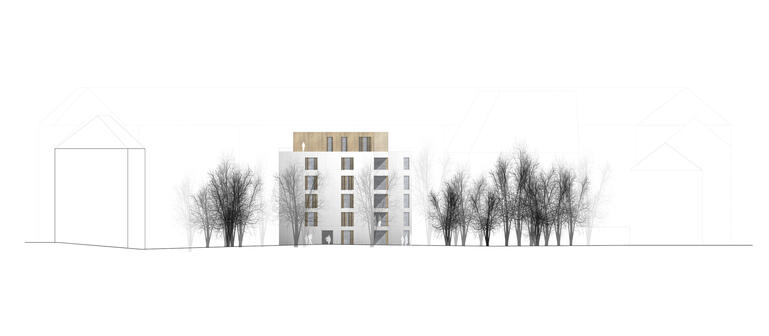
Sustainable construction means first and foremost flexible building in order to be able to meet future requirements - demographic change, changes in lifestyles - permanently.
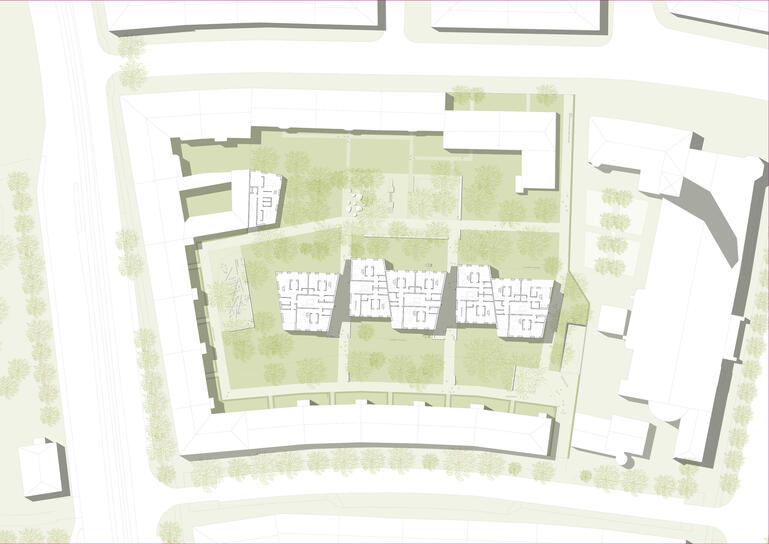
Concept housing construction
Permanently sustainable neighborhoods, high flexibility of use to be able to easily provide adaptation services in the future, requires a slightly higher initial investment and reserve space (stairwell) - but is a long-term investment in the future: prepared for demographic change, changed household sizes and lifestyles, thus also a "lifelong" Including the option of a barrier-free or even wheelchair-friendly design according to DIN 18040 Part 2. Equally, living communities (even small care communities) or SOHO units (small office home) can be realized, or the living space can be completely individually flexible. Each unit is also assigned a privacy-protected private space in the form of a loggia. As a supplement, there are small-scale joker rooms (1/2 rooms) for temporary living room enlargement and reduction, for special purposes as a guest room, music room ...
Open space concept
The valuable trees in the courtyard is the unique feature of this block. The view through and over the treetops creates a feeling of generosity, which should also be maintained with the new building. With regard to the tree population, the existing open spaces are very carefully developed further.
Coming from the Braystraße, you enter the yard via a small distribution point. From here you can see the new building with its five approaches (address formation). As before, the access leads below the tree-lined embankment parallel to the eastern existing building.
In order to secure the privacy of the existing ground floor apartments and to contribute to the area sealing, the current track is reduced to 3 m and removed from the existing stock. From this main path, branch paths lead directly to the entrances to the house. The living quality of the ground floor apartments of the new building is secured.
In the interior of the block, two large children's play areas, the southern one with a climbing course for older children fitted between the trees, and in the western part offers for smaller children. The high quality of stay in this area is supported by overlong benches along the playing areas.

energy concept
In the development of innovative and sustainable building concepts, following an energy demand analysis with the aim of minimizing energy consumption as far as possible, the individual measures for primary energy saving and avoidance of pollutant emissions are implemented in order of effectiveness.
The passive optimization of buildings is based on minimizing heat loss through opaque components. The compact design of the buildings and a thermal insulation free approx. 20 cm thick thermal insulation on walls, roof areas (30 cm) and below the basement ceiling in combination with triple insulating glass ensures a u-value of the glazing of 0.7 W / m²K and optimized frame constructions excellent thermal insulation and high user comfort in the apartments.
The individually controlled heating of the rooms can be done by simple and compact space heaters, which can be placed relatively freely, since a loss of comfort due to cold air drop at the windows due to the high insulating value of the glazing can be excluded. Controlled ventilation of each apartment via compact ventilation systems arranged in the underground car park ensures defined fresh air change rates and high air quality at high heat recovery rates.
Through this extensive optimization of the heating requirements for the heating, a very good low-energy standard with a specific heat requirement of about 35 kWh / m²a can be achieved. About half of this characteristic value is needed for the year-round hot water preparation.
For the central heat supply via its own district heating network, gas-operated CHP modules are proposed in combination with a gas condensing value point boiler. The CHP works with a central buffer tank and is only dimensioned for a part of the maximum heating power so that sufficiently long running times and economical operation are achieved.
To further reduce primary energy consumption, the roof areas should also be used for energy production.
On the roofs of the building, photovoltaic modules are used for grid-coupled power generation. Here, above the water leading roof level modules are raised horizontally to ensure appropriate ventilation of the modules. Thus, standard PV modules can be mounted and about 70% of the existing roof areas are occupied by active modules. When using polycrystalline or monocrystalline solar cells, a solar peak power of 100 kW solar can be generated on the roofs on sunny days.
The extensive optimization of the heating requirements of the buildings as well as the optimized heat supply via the heat network with combined heat and power and the roof-integrated electricity generation leads to a primary energy optimized and forward-looking overall concept for the residential development.
Project information
Location
Munich, Germany
Client
Bayerische Landesbrandversicherung Aktiengesellschaft
Team
Yang Feng
in Cooperation with
Fink+Jocher Architekten
Frank Roser Landscape Architecture
Transsolar Clima Engineering
Type of project
Competition
Period
2011
Completion
Competition
Residential building Braystraße in Munich, 1st prize
